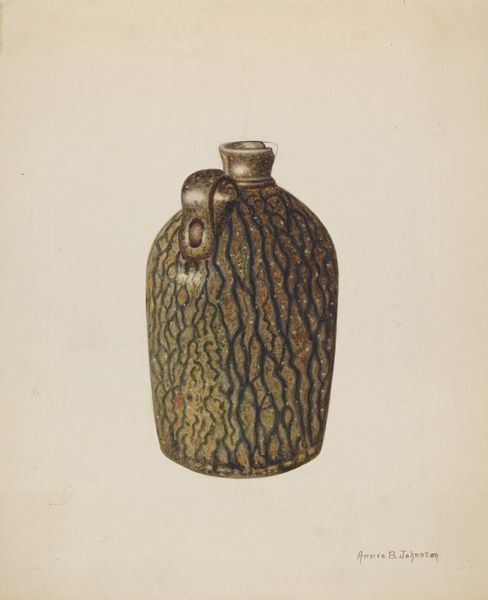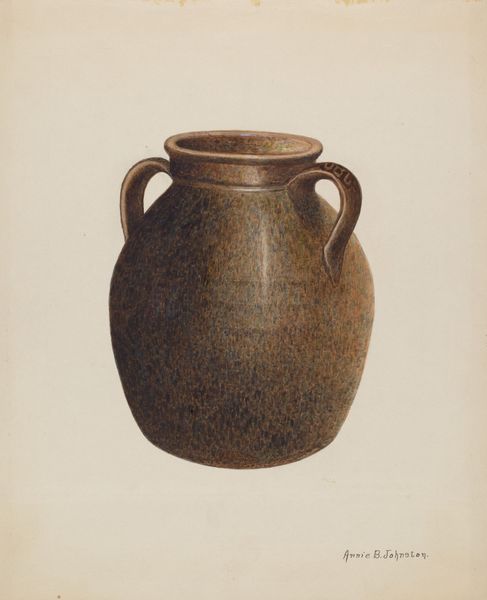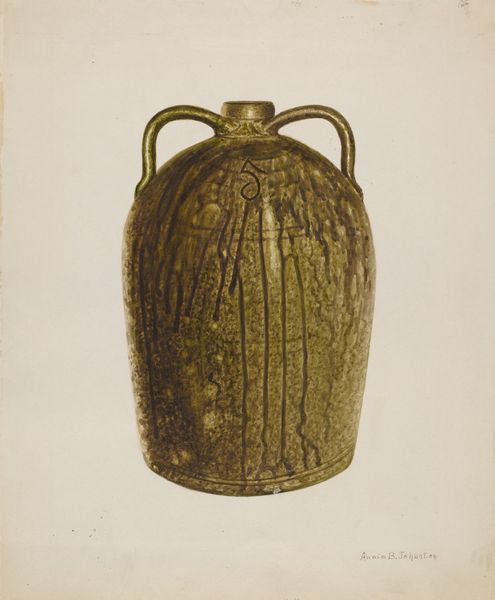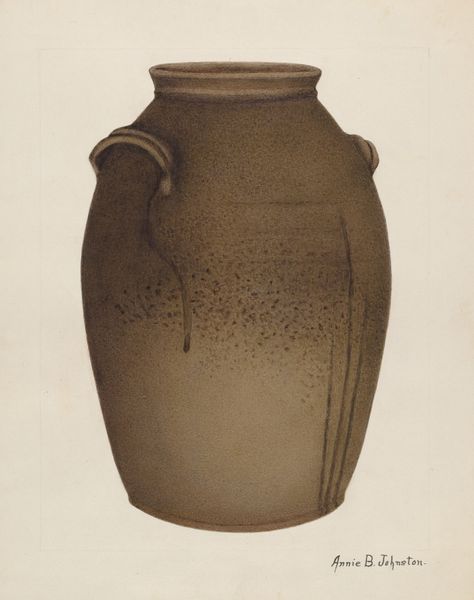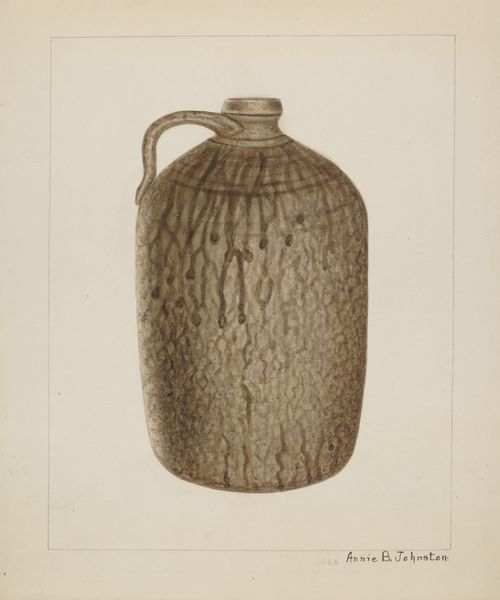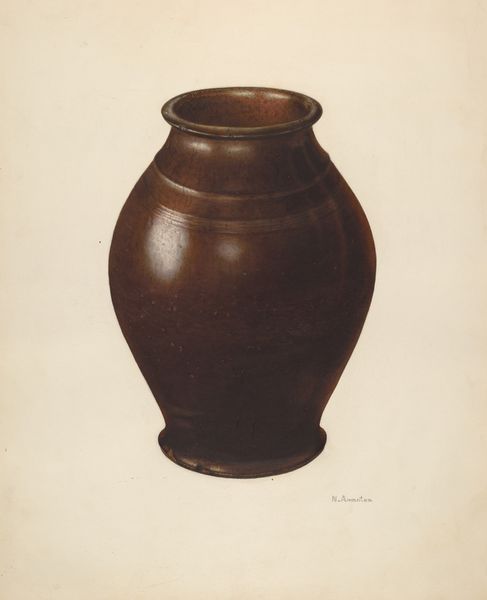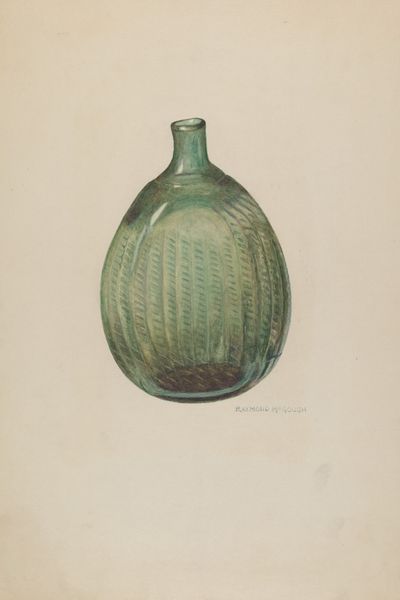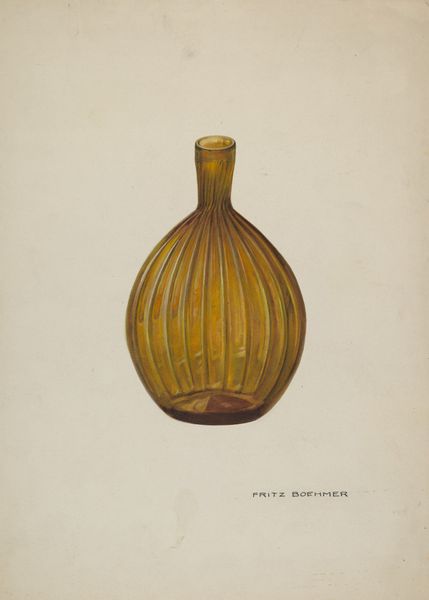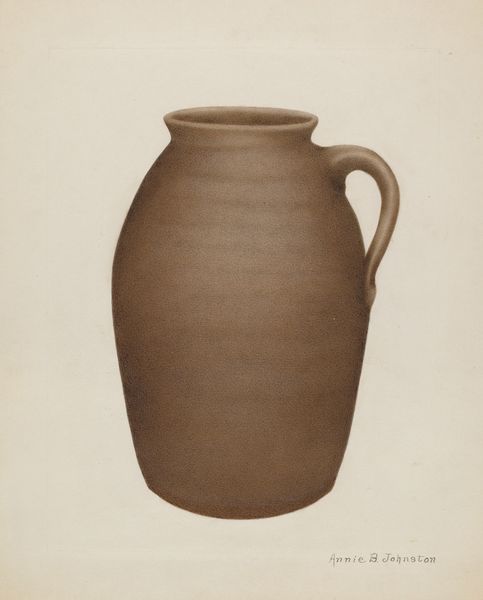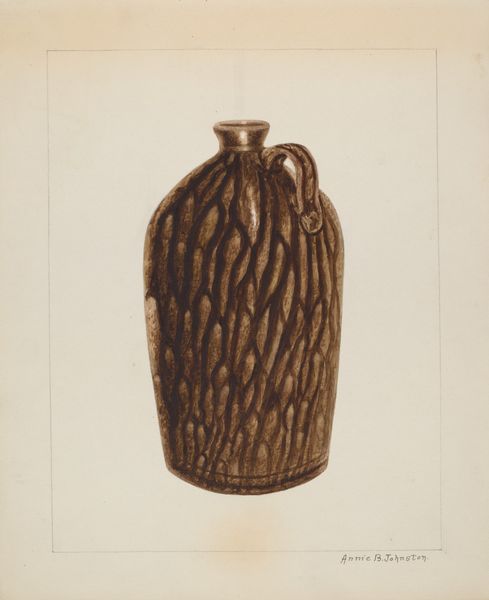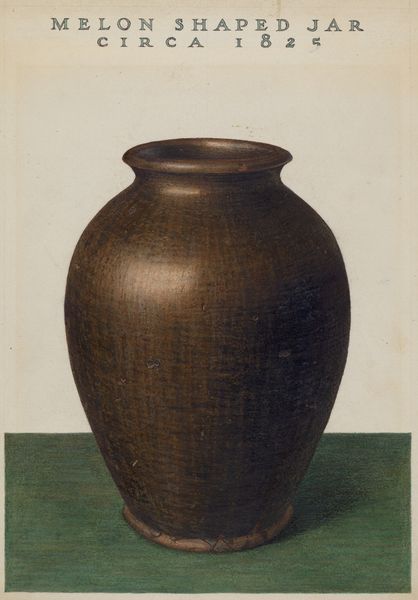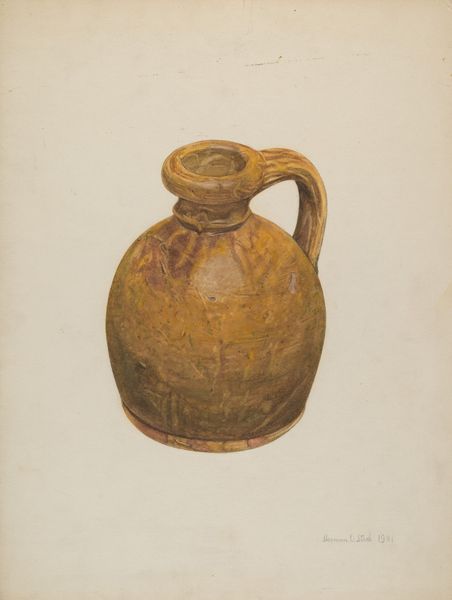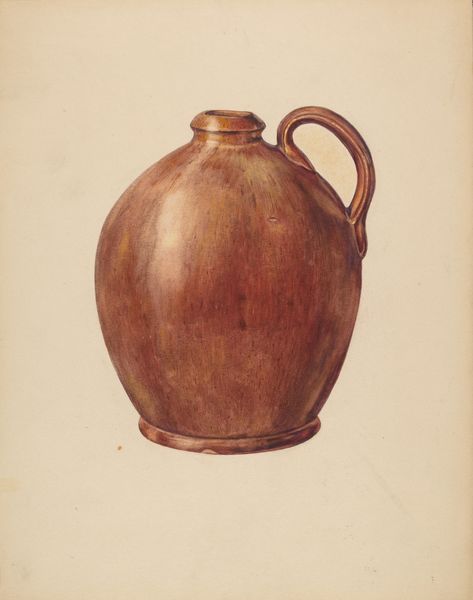
drawing, watercolor, earthenware
#
drawing
#
watercolor
#
earthenware
#
folk-art
#
watercolour illustration
#
regionalism
Dimensions: overall: 27.9 x 22.8 cm (11 x 9 in.) Original IAD Object: 16' High 10" Dia.
Copyright: National Gallery of Art: CC0 1.0
Curator: Immediately, I see a sense of rustic functionality, but also… a kind of quiet desperation, almost? Editor: This is "Stoneware Jug," a drawing rendered in watercolor and possibly earthenware, created around 1938 by Annie B. Johnston. The drawing captures the earthy essence and shape of a jug from this era, echoing both folk-art traditions and elements of Regionalism. Curator: It’s precisely that era I’m responding to. The Depression was still very much impacting lives in the 30s, even if obscured from many of the portraits and landscapes created at that time. The drawing style hints at hardship but also at endurance—there’s something solid and reliable about this object depicted. The choice to showcase the utilitarian echoes the lived experience of the people, perhaps farmers, relying on stoneware for essential tasks like fermentation, or preservation, for example. Editor: Absolutely. This jug whispers of both utility and cultural memory, rooted in rural communities, evoking self-reliance but also reminding us of their connection to the land and natural resources around them. Note how the texture isn't idealized, there is a deliberate emphasis on imperfections – are they from the artist, or from the depicted artefact? Curator: That imperfect rendering—you’re right— adds an authenticity that goes beyond mere representation. And let’s remember jugs held both practical items and illicit ones, depending on circumstances; objects often had dual purposes based on community needs and values. Symbolically, the jug embodies resilience, adaptation, perhaps secrets too, given its possible associations with concealed items during harsh economic times. Editor: Right, the object moves into and embodies socio-political contexts and narratives, where we could ask ourselves: what sort of fluids might have once flowed from this jug? And if art imitates life, what message does Annie B. Johnston's subject tell us about this chapter of history? Curator: I find I am left wondering what the presence of that water vessel tells us, from both an ecological point of view, as well as within the socio-historical one, if there even truly are different and discrete points of views in this case... Editor: What does "rural" truly mean in this case; let us consider this piece as more than merely illustrative!
Comments
No comments
Be the first to comment and join the conversation on the ultimate creative platform.
